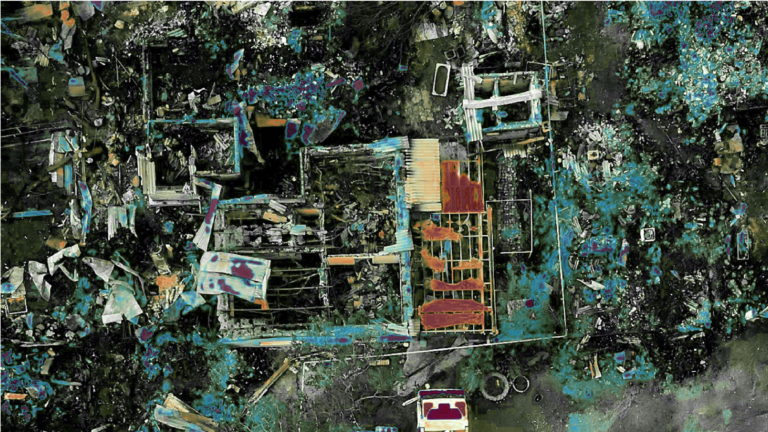SERVICES FOR INSURANCE PROCEEDINGS
Speed and efficiency - drones allow drones to reach remote or hard-to-reach areas quickly and efficiently, allowing hunting damage inspections to be carried out quickly and effectively.
Accuracy - drones are equipped with advanced cameras, allowing them to accurately record and document damage, including its size (area measurement) and nature.
Large-area damage analysis - drones make it possible to conduct inspections of hunting damage over large areas, allowing for accurate identification of areas with the most damage.
Our typical inspection activities and hunting damage inventories include:
1. Photo or video documentation;
2. Orthophotoplan of areas affected by hunting damage (photogrammetric raid);
3. Vectorization - measurement of damaged areas;
4. Qualitative and quantitative report;
A vectorized study (allowing measurement of damaged areas) is an objective tool for all parties to the proceedings. It guarantees a faster agreement on the amount of compensation than an estimate based on a ground-level inspection.
Speed and accuracy - drones can inspect burned areas much faster than humans. In addition, being equipped with cameras and sensors, they can provide highly accurate information about areas that have been damaged.
Safety - Inspection of burn pits can be dangerous for people, due to unstable building components, secondary fires, etc. The use of drones makes it possible to safely conduct inspections without putting people in danger.
Accessibility - drones are able to reach places that humans are unable to reach due to altitude, dangerous gases, and structural instability.
Typical activities in the inspection and inventory of burn areas include:
1. Photo or video documentation;
2. Orthophotoplan of the burned area (photogrammetric raid):
3. Optional production of an overview 3D model;
4. Vectorization - measurement of damaged or destroyed areas;
5. Qualitative and quantitative report;

OTHER INDUSTRIES:
